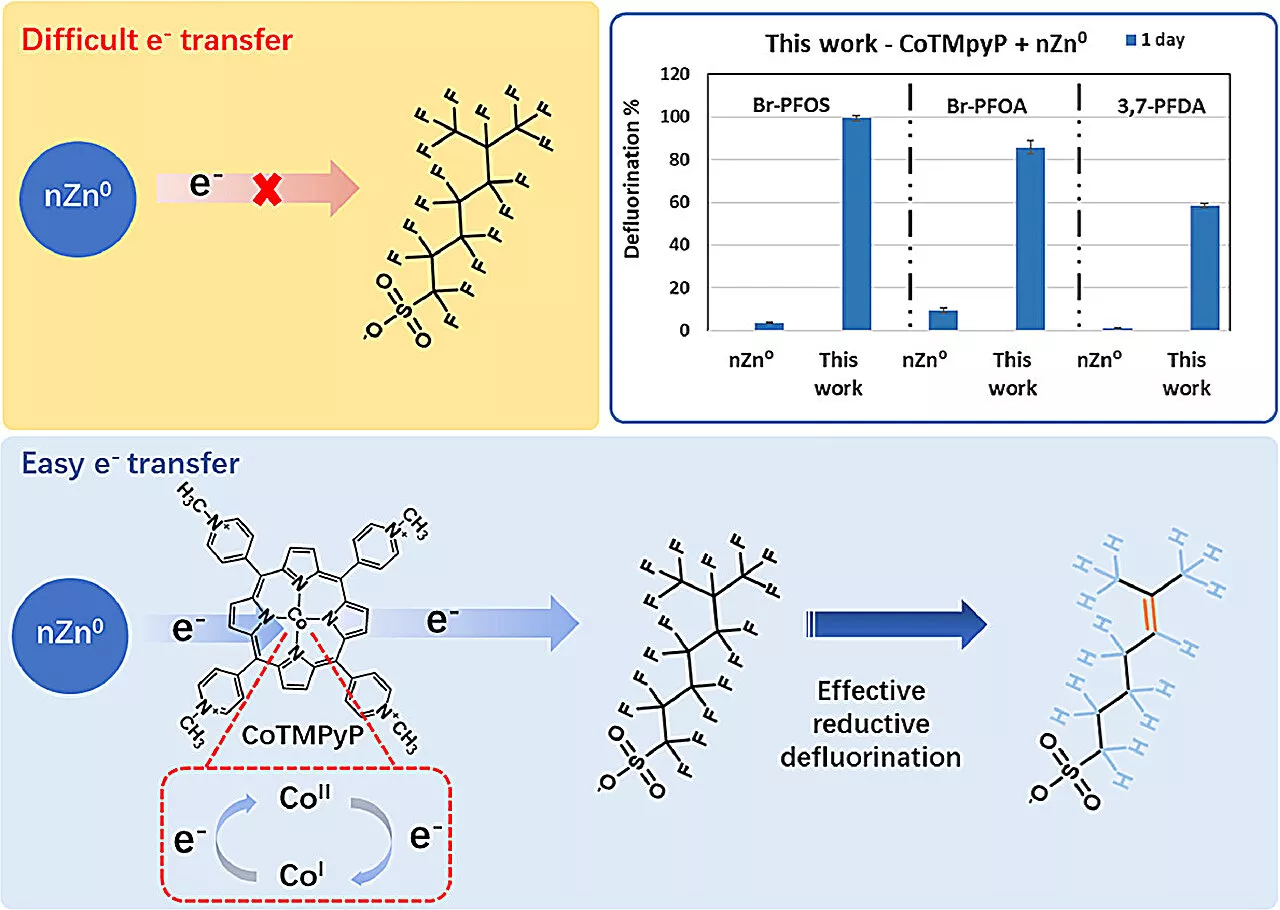Researchers in Japan say they have found a way to break down so-called forever chemicals at room temperature using visible light.
You may not be familiar with Ritsumeikan in Kyoto, Japan, but researchers there say they may have an answer to the curse of so-called “forever chemicals,” also known at PFAS, the class of chemicals used in many commercial applications that are so durable that they resist breaking down for decades, or longer. That might not be a problem were it not for the fact that they have been identified as risk factors that contribute to a variety of human health concerns such as cancer.
However, this very stability has become a major problem. These forever chemicals do not easily break down in the environment, so they accumulation in water, soil, and even the bodies of humans, where they are known to cause carcinogenic effects and hormonal disruptions. Today, these forever chemicals can be found in drinking water supplies, food, and even in the soil of Antarctica.
To prevent photoexcited electrons from recombining with holes, TEOA is added to capture the holes and prolong the lifetime of the reactive electrons available for PFAS decomposition. These electrons undergo an Auger recombination process, where one exciton recombines non-radiatively, transferring its energy to another electron, and creating highly excited electrons.
United States Latest News, United States Headlines
Similar News:You can also read news stories similar to this one that we have collected from other news sources.
 Researchers Claim Ominous New AI System Can Detect LiesScience and Technology News and Videos
Researchers Claim Ominous New AI System Can Detect LiesScience and Technology News and Videos
Read more »
 Researchers identify multiple 'forever chemical' contamination hot spots in USHarmful chemicals that don't break down are present in public water systems nationwide, and West Virginia University economists have found that densely populated, higher-income areas and those that use groundwater tend to have the highest contamination levels.
Researchers identify multiple 'forever chemical' contamination hot spots in USHarmful chemicals that don't break down are present in public water systems nationwide, and West Virginia University economists have found that densely populated, higher-income areas and those that use groundwater tend to have the highest contamination levels.
Read more »
 Researchers claim photoluminescent aerogel has a visible light reflectance of 104%A team of chemists and materials scientists at Sichuan University, in China, has developed a photoluminescent aerogel with a visible light reflectance of 104%. In their study, published in the journal Science, the group created their aerogel from readily available biomass.
Researchers claim photoluminescent aerogel has a visible light reflectance of 104%A team of chemists and materials scientists at Sichuan University, in China, has developed a photoluminescent aerogel with a visible light reflectance of 104%. In their study, published in the journal Science, the group created their aerogel from readily available biomass.
Read more »
 Researchers found a new vampire squid, but it’s more adorable than dangerousResearchers have just discovered a second vampire squid species that lives in the 'twilight zone' of the South China Sea.
Researchers found a new vampire squid, but it’s more adorable than dangerousResearchers have just discovered a second vampire squid species that lives in the 'twilight zone' of the South China Sea.
Read more »
 New method to degrade PFAS 'forever chemicals' found effective in the labPer-and poly-fluoroalkyl substances (PFAS) are known as 'forever chemicals' because they are notoriously resistant to degradation. Due to their stable chemical structure, PFAS—which are found in thousands of variants—are used in oil and grease-resistant food packaging, non-stick cookware, cosmetics, clothing, and fire-fighting foams.
New method to degrade PFAS 'forever chemicals' found effective in the labPer-and poly-fluoroalkyl substances (PFAS) are known as 'forever chemicals' because they are notoriously resistant to degradation. Due to their stable chemical structure, PFAS—which are found in thousands of variants—are used in oil and grease-resistant food packaging, non-stick cookware, cosmetics, clothing, and fire-fighting foams.
Read more »
 Researchers find potential new method to control plasma density in fusion reactorsIn the realm of fusion research, the control of plasma density, temperature, and heating is crucial for enhancing reactor performance. Effective confinement of plasma particles and heat, especially maintaining high density and temperature at the core where fusion occurs, is essential.
Researchers find potential new method to control plasma density in fusion reactorsIn the realm of fusion research, the control of plasma density, temperature, and heating is crucial for enhancing reactor performance. Effective confinement of plasma particles and heat, especially maintaining high density and temperature at the core where fusion occurs, is essential.
Read more »
